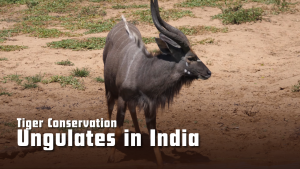Font size:
Print
India Adds Two More Ramsar Sites
Prime Minister hails addition of two New Ramsar Sites in Rajasthan
Context: On the eve of World Environment Day, Union Minister for Environment, Forest and Climate Change Shri Bhupender Yadav announced the inclusion of Khichan in Phalodi and Menar in Udaipur, both in Rajasthan, as new Ramsar Sites — wetlands of international importance under the Ramsar Convention. This brings India’s total number of Ramsar Sites to 91.
About the Ramsar Convention
- An intergovernmental treaty was signed in 1971 in Ramsar, Iran, for the conservation and sustainable use of wetlands. India became a party to the Ramsar Convention on February 1, 1982.
- Wetlands are defined as natural or artificial, permanent or temporary water bodies, including marine areas less than six metres deep at low tide.
- Wetlands are described as productive ecosystems that support biodiversity, climate regulation, flood control, groundwater recharge, and livelihoods.
- There are 9 criteria to designate a wetland as a Ramsar Site, based on biodiversity, waterbird and fish populations, and ecological uniqueness.
Menar Wetland Complex – Key Features
- A freshwater monsoon wetland made up of: Braham talab, Dhand tala, Kheroda talab and the surrounding agricultural land.
- Habitat for 110 waterbird species, including 67 migratory species.
- Hosts critically endangered species like: White-rumped vultures and long-billed vultures.
- Over 70 plant species, including mango trees, support Indian flying foxes.
- Known for community-led conservation, Menar villagers play an active role in wildlife protection by preventing poaching and fishing.
Khichan Wetland – Key Features
- Located in the northern Thar Desert, comprising: Ratri nadi (river), Vijaysagar talab (pond), Riparian habitat and scrub land.
- Supports over 150 bird species, thriving in the desert ecosystem.
- Internationally known for hosting over 22,000 migratory demoiselle cranes each winter.
- Residents actively help reduce crane mortality from power line collisions and stray dog attacks.
- Attracts bird watchers, tourists, students, and scientists, due to its spectacular seasonal bird gatherings.
Subscribe to our Youtube Channel for more Valuable Content – TheStudyias
Download the App to Subscribe to our Courses – Thestudyias
The Source’s Authority and Ownership of the Article is Claimed By THE STUDY IAS BY MANIKANT SINGH


